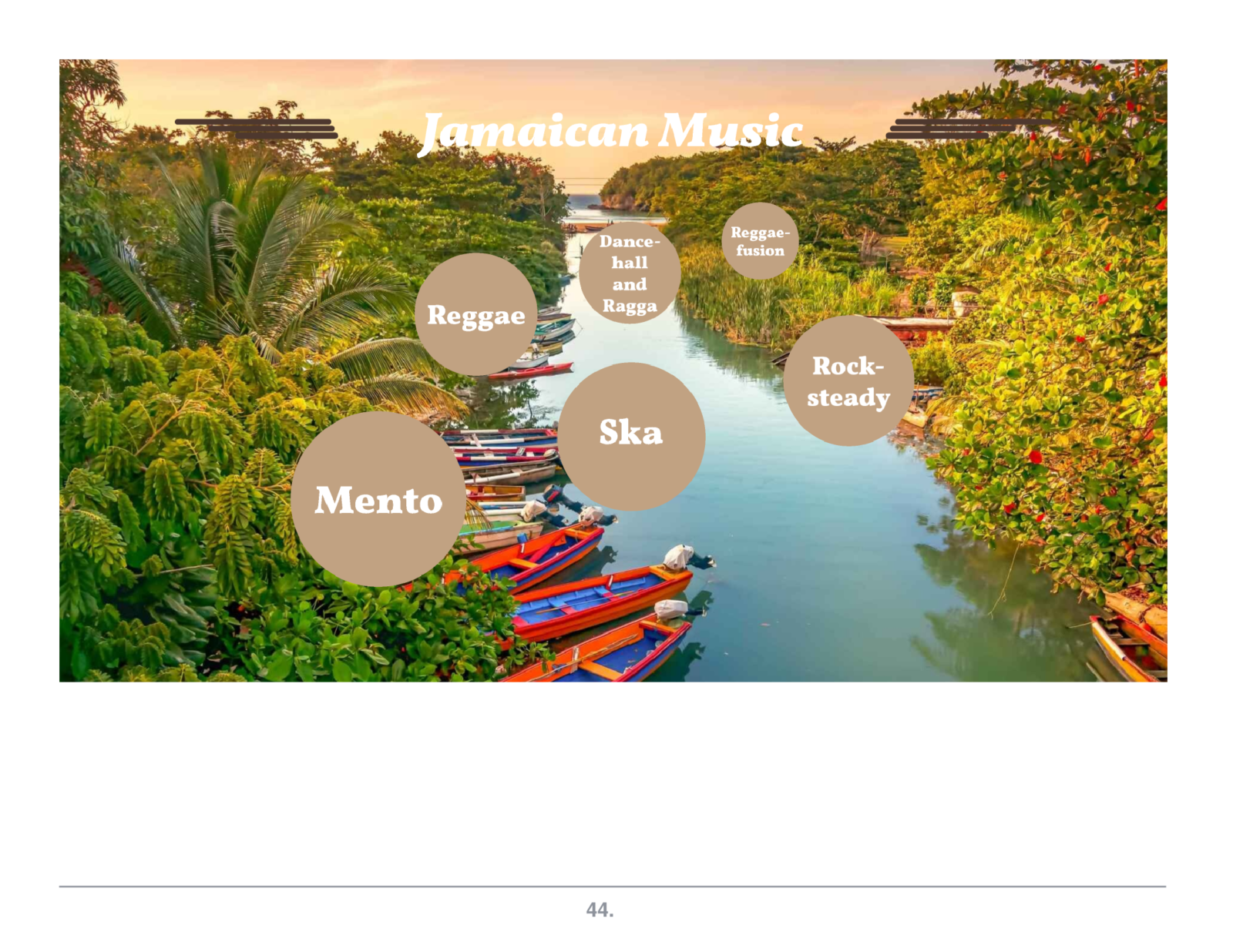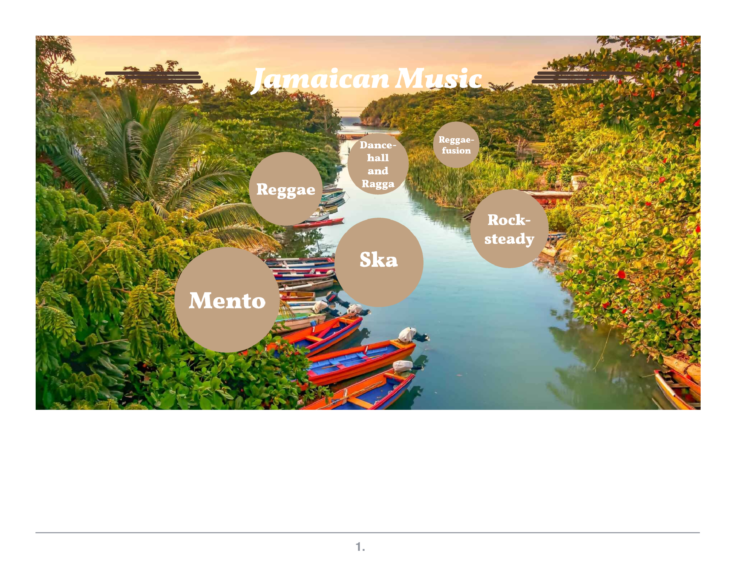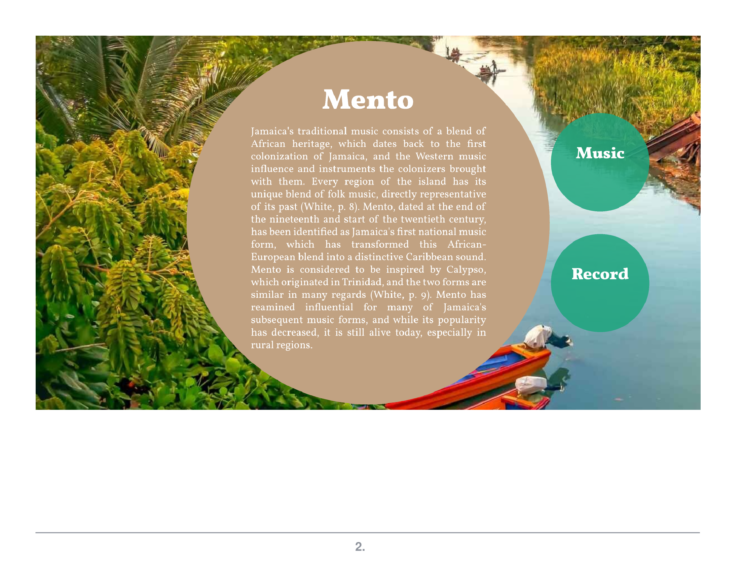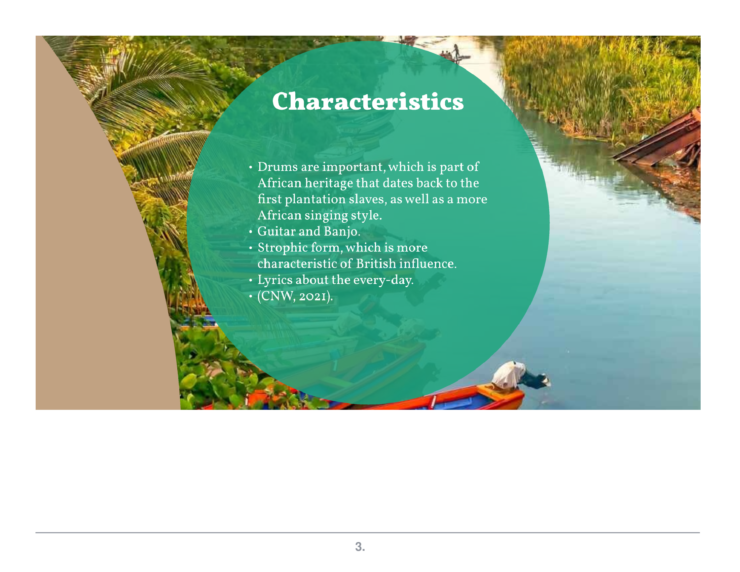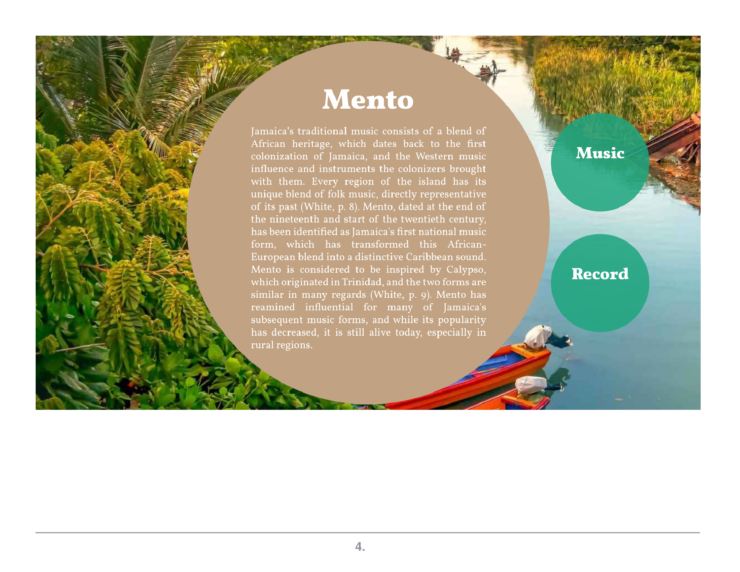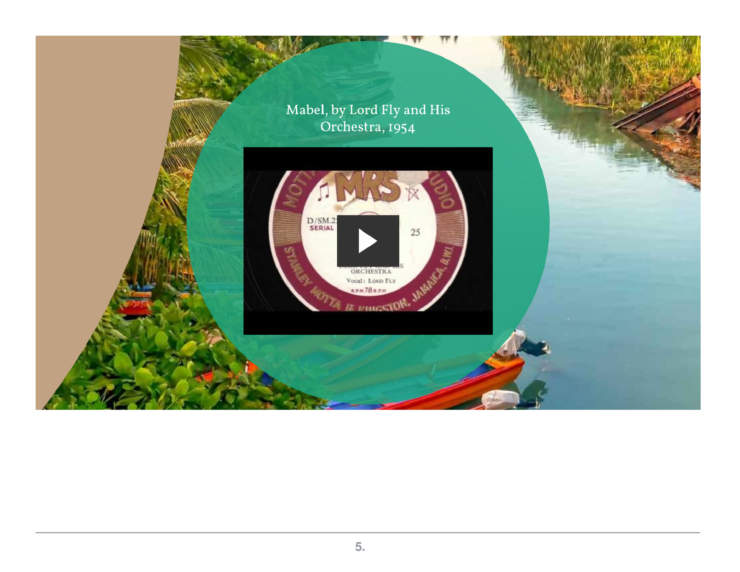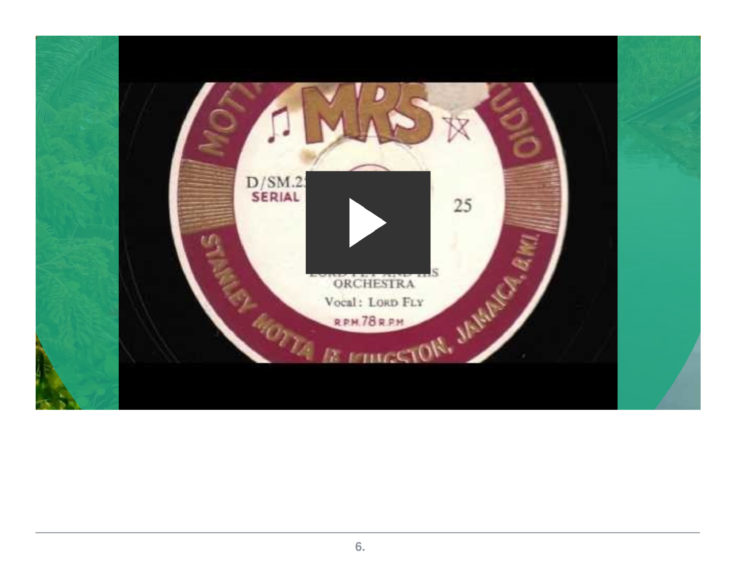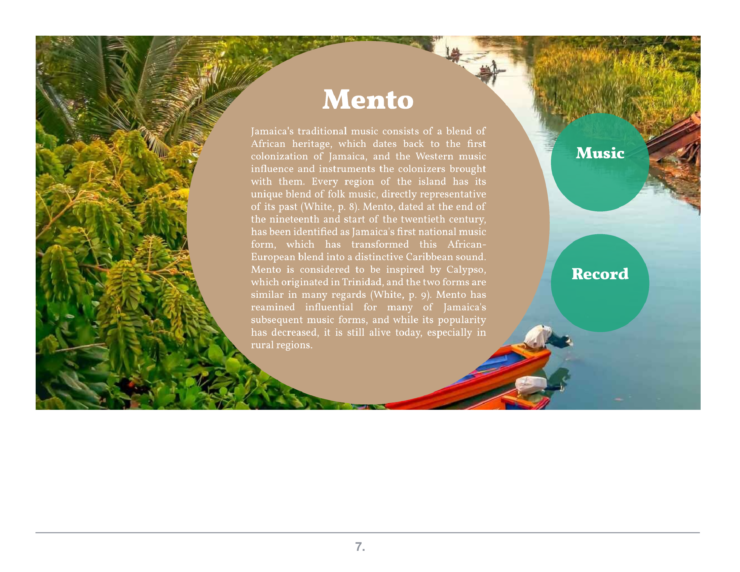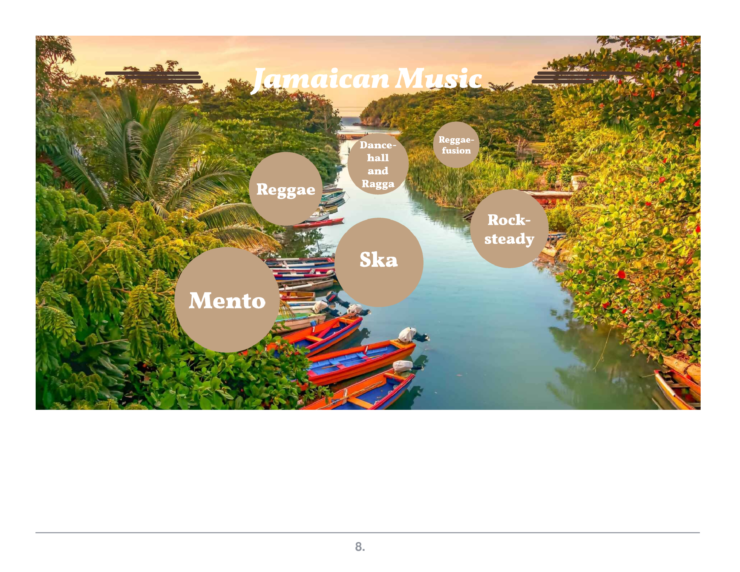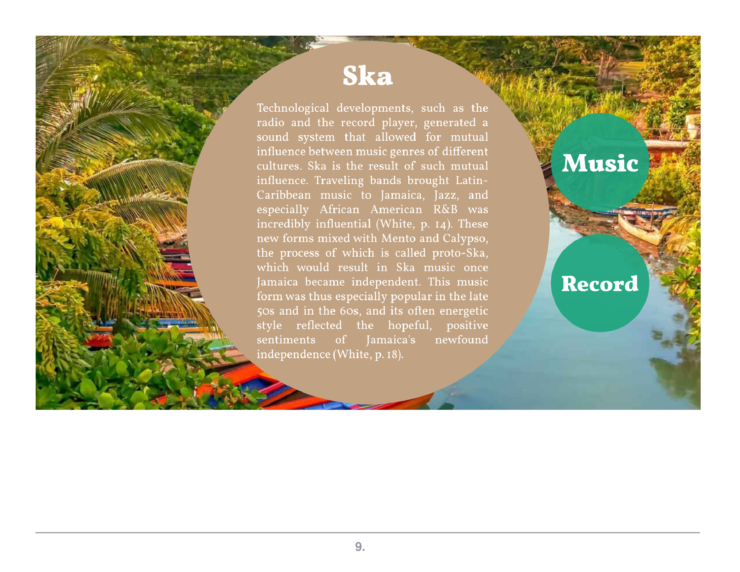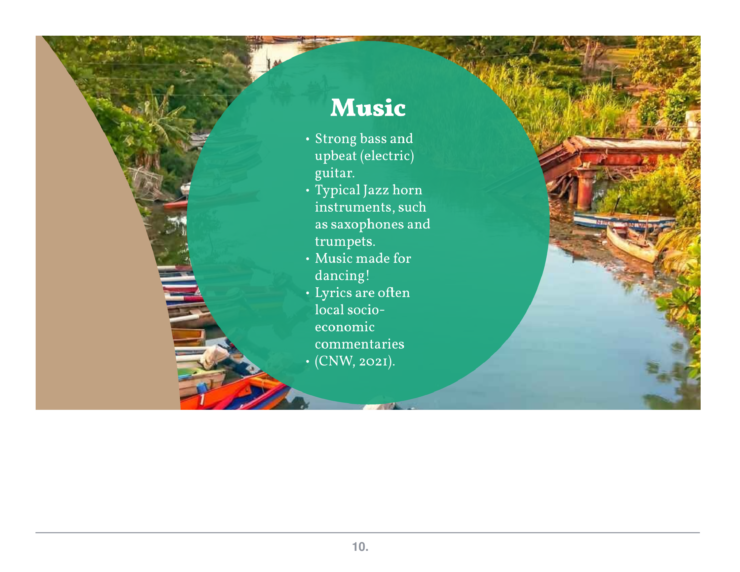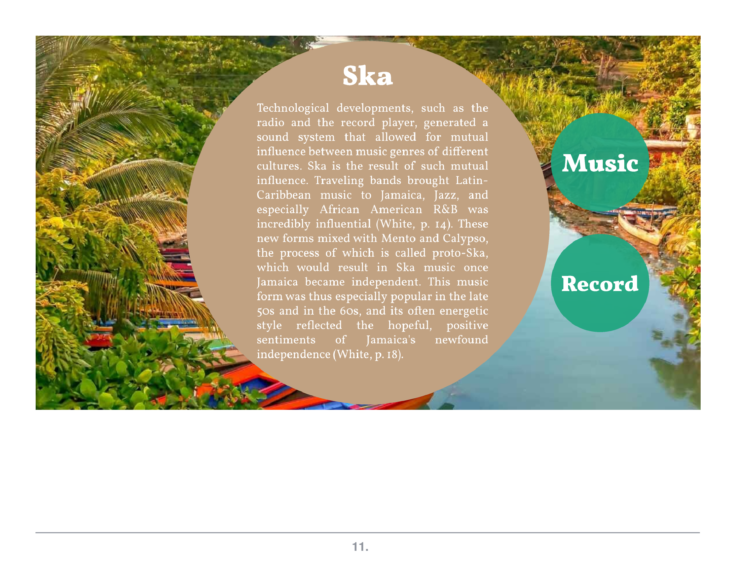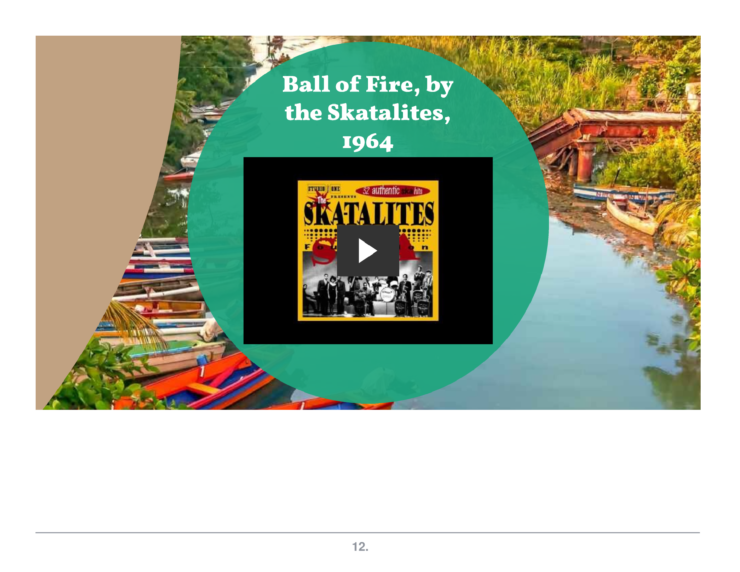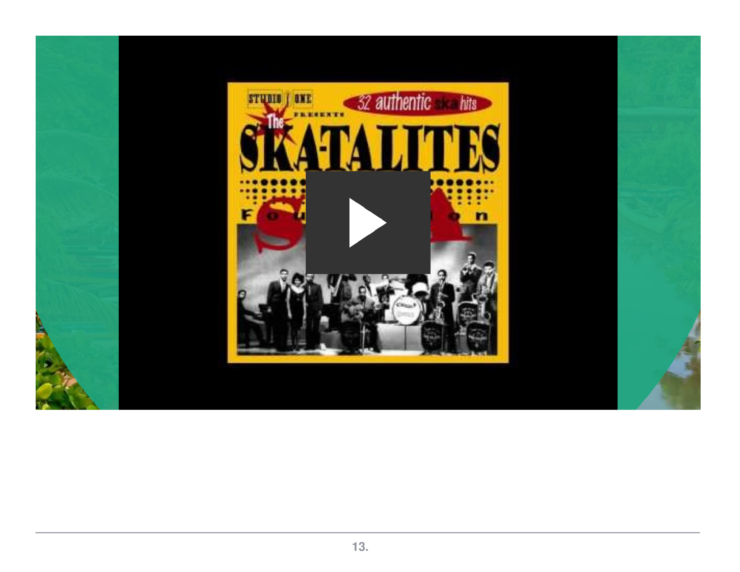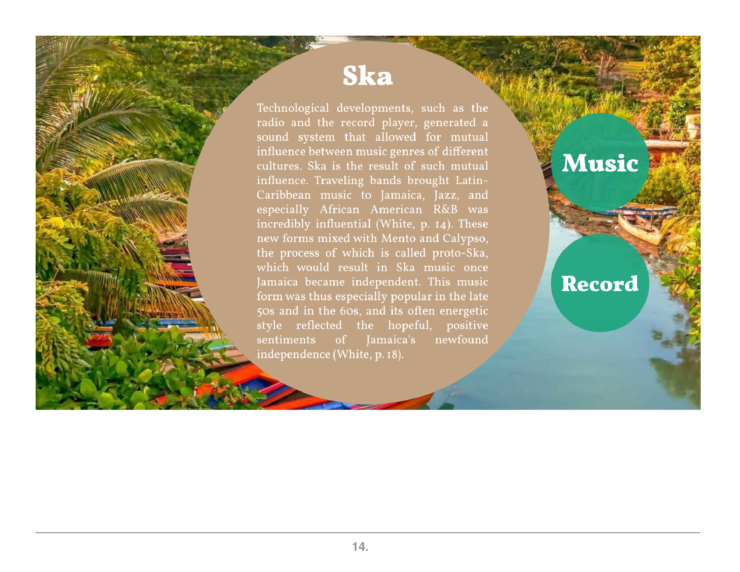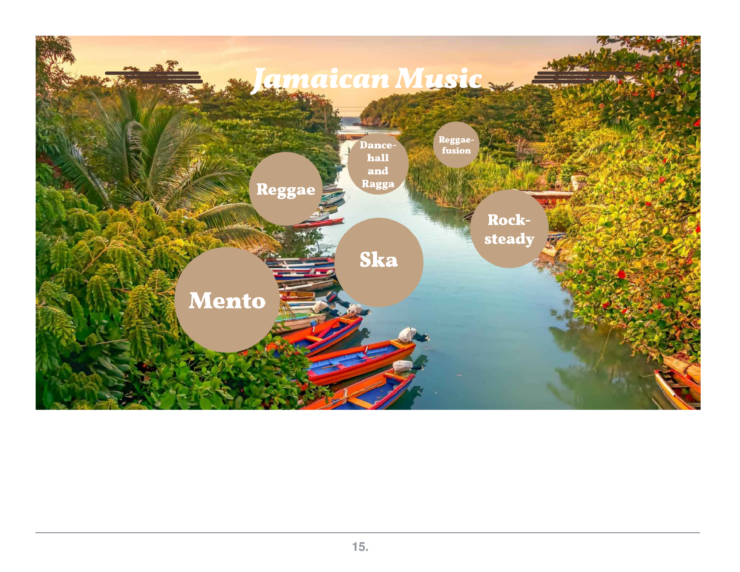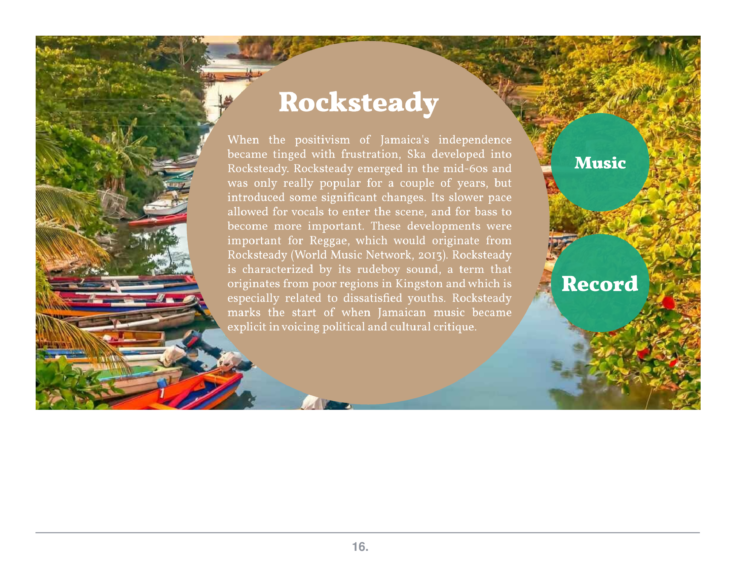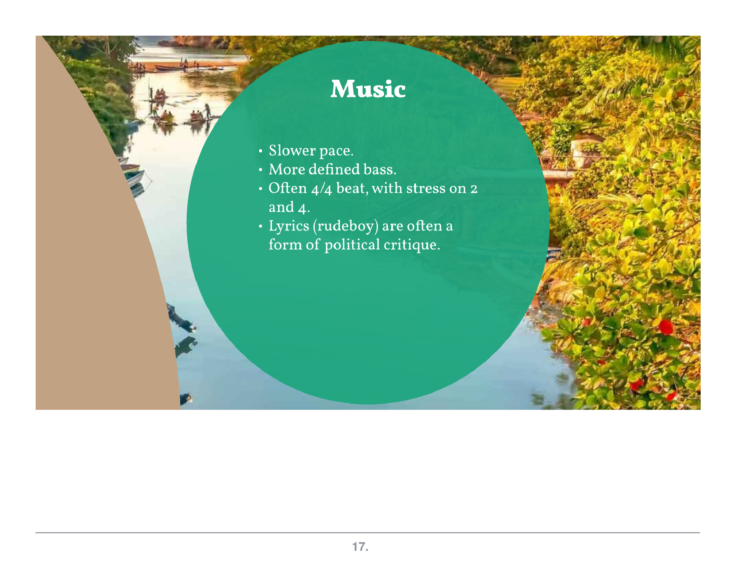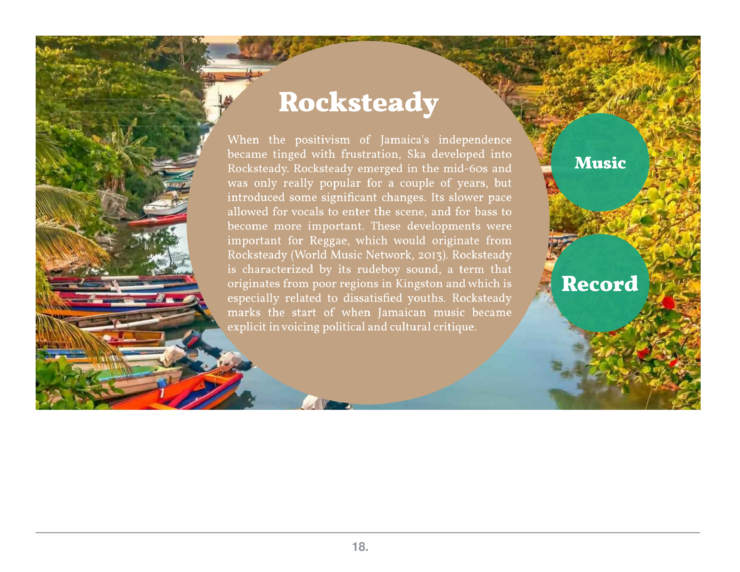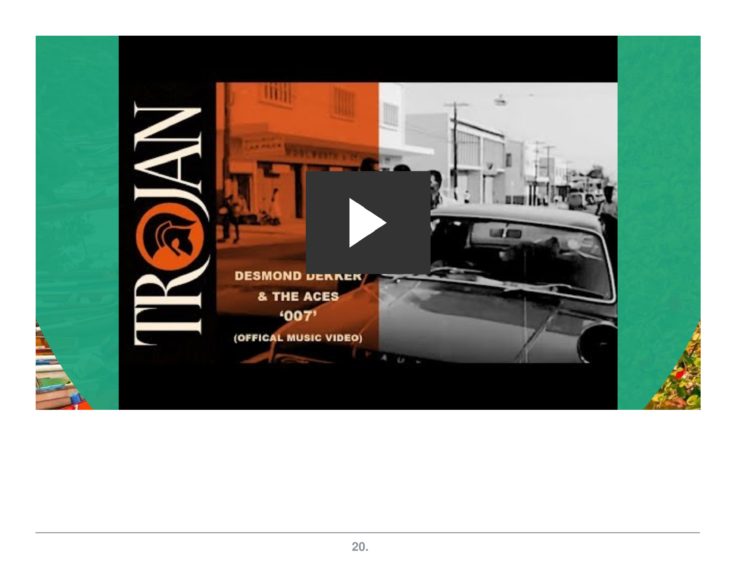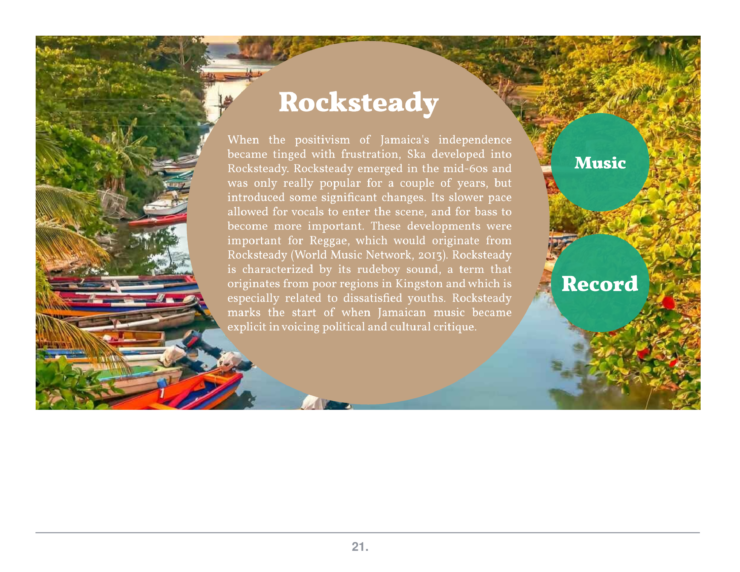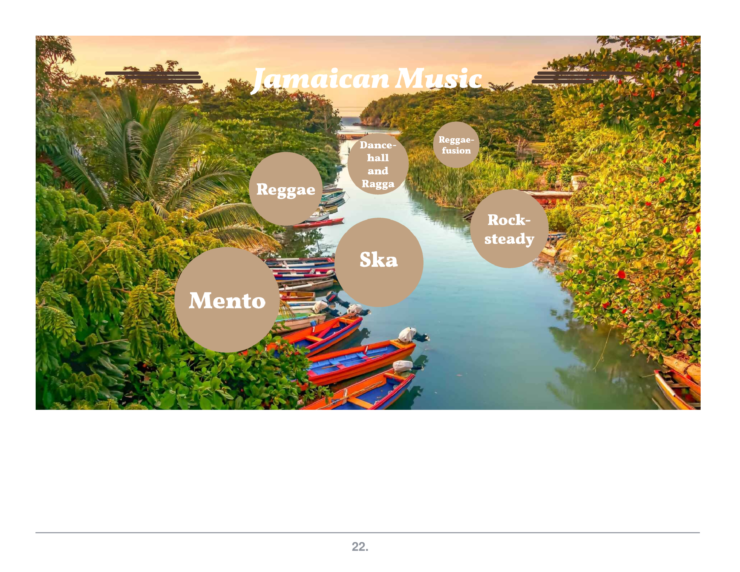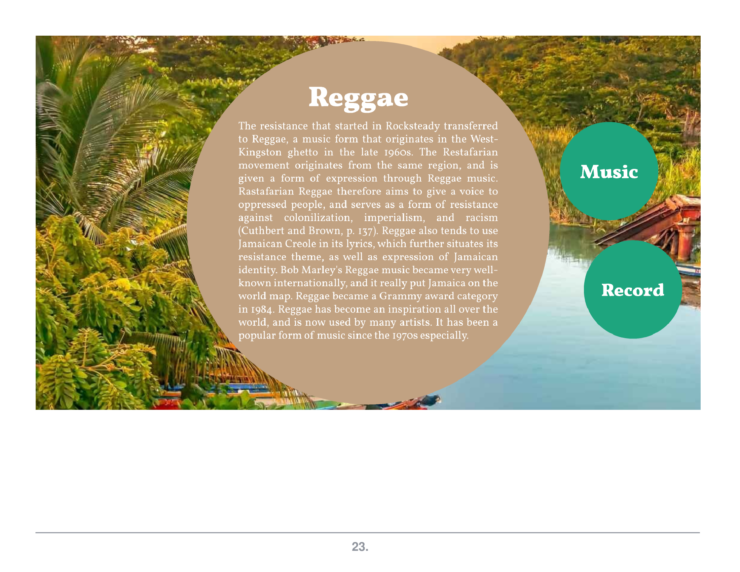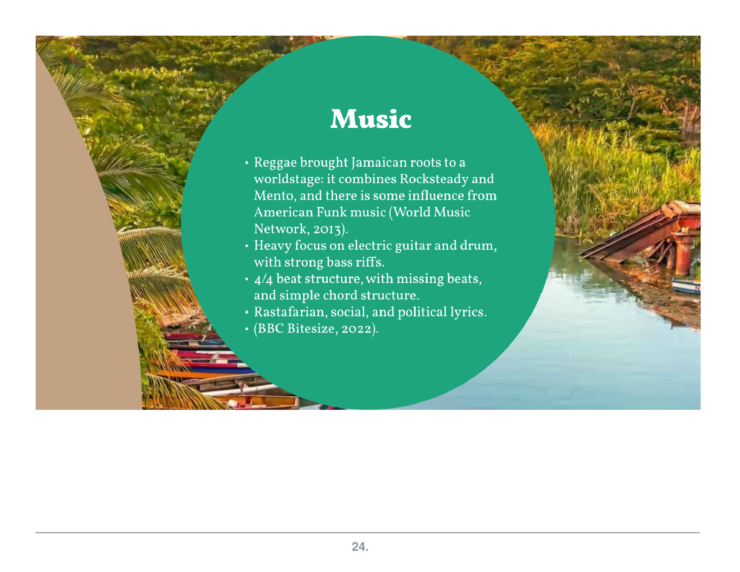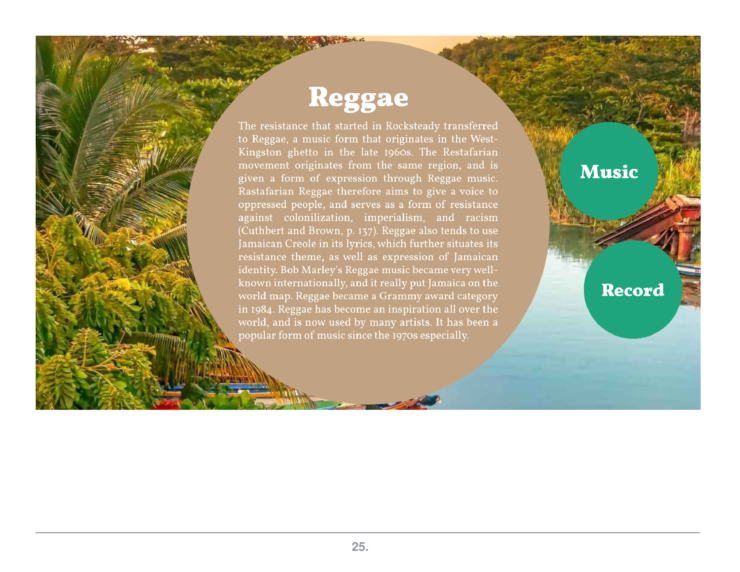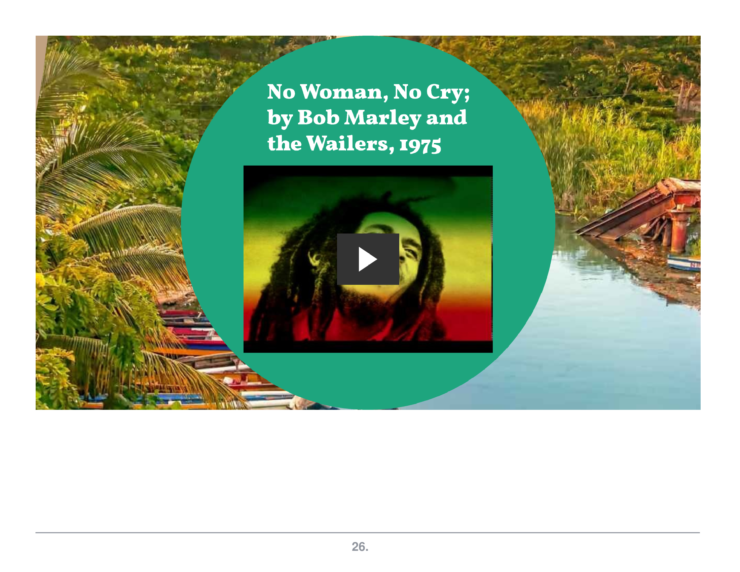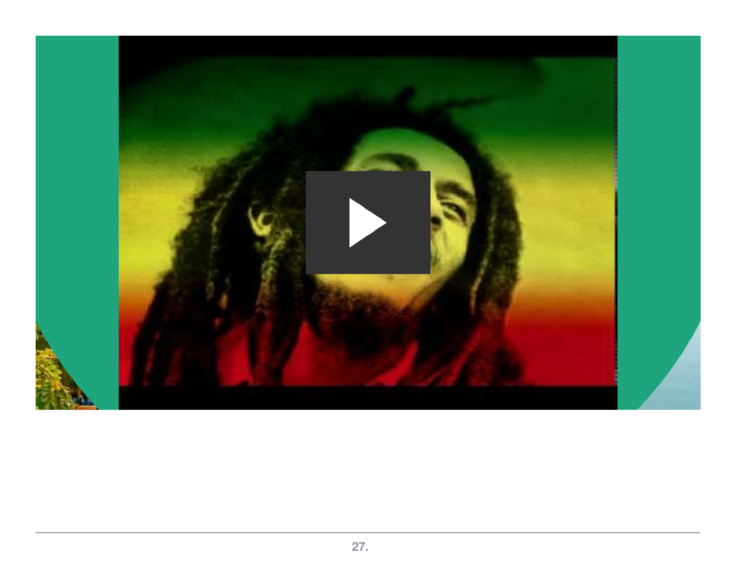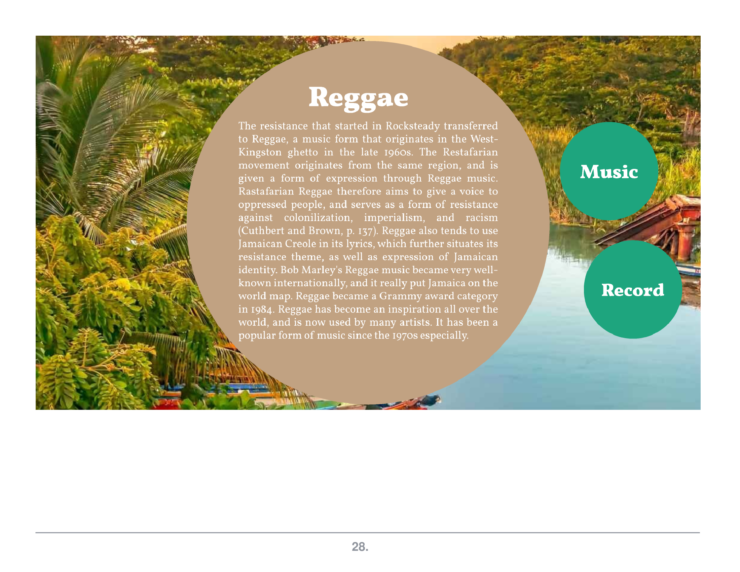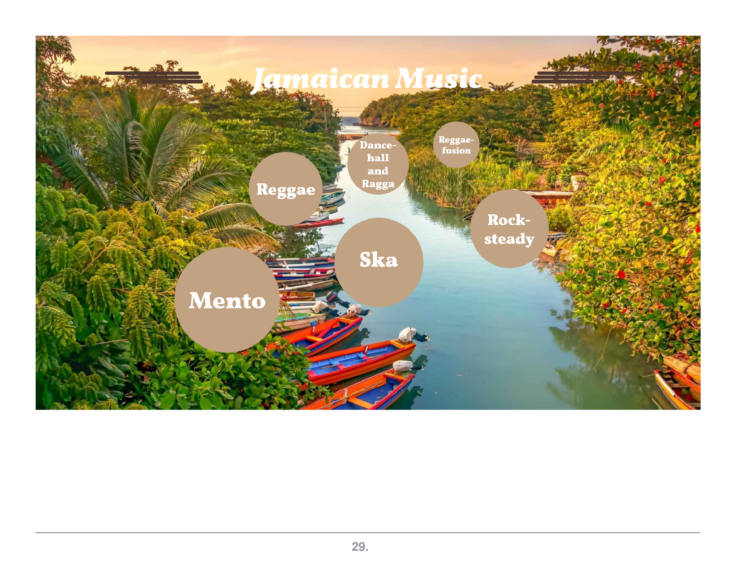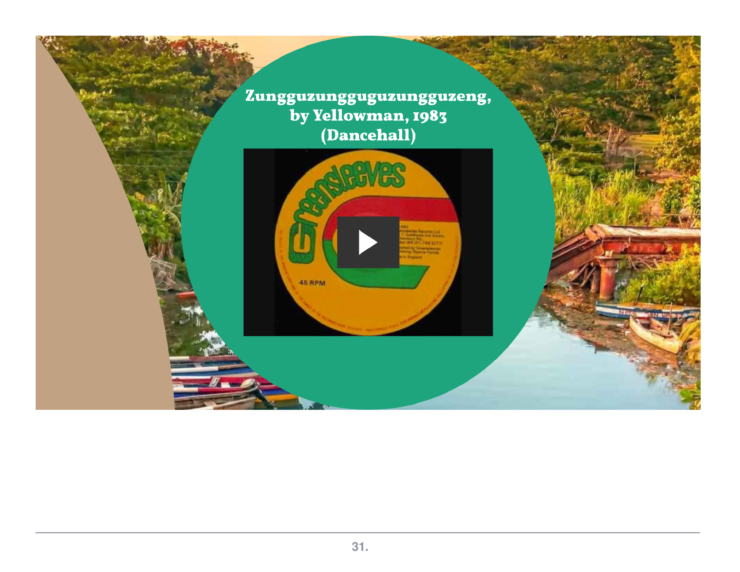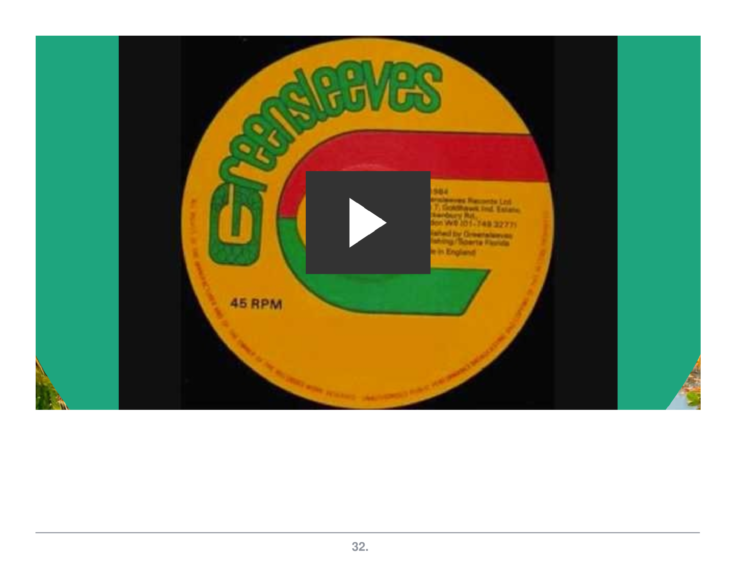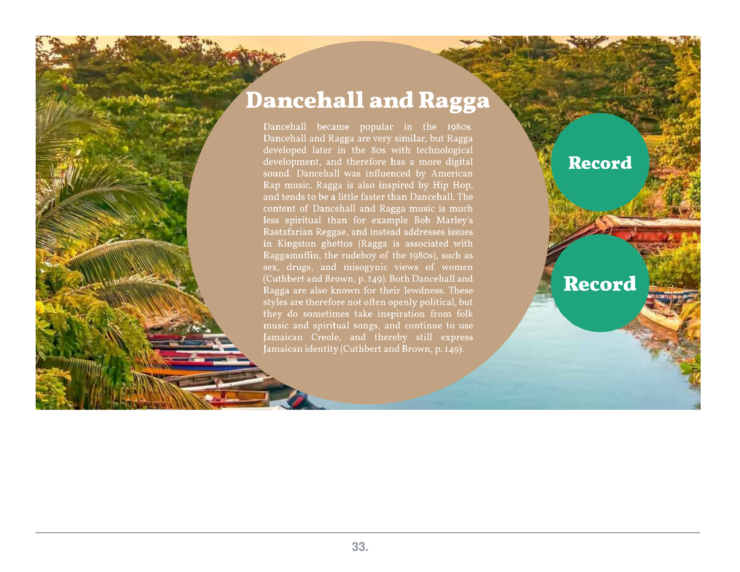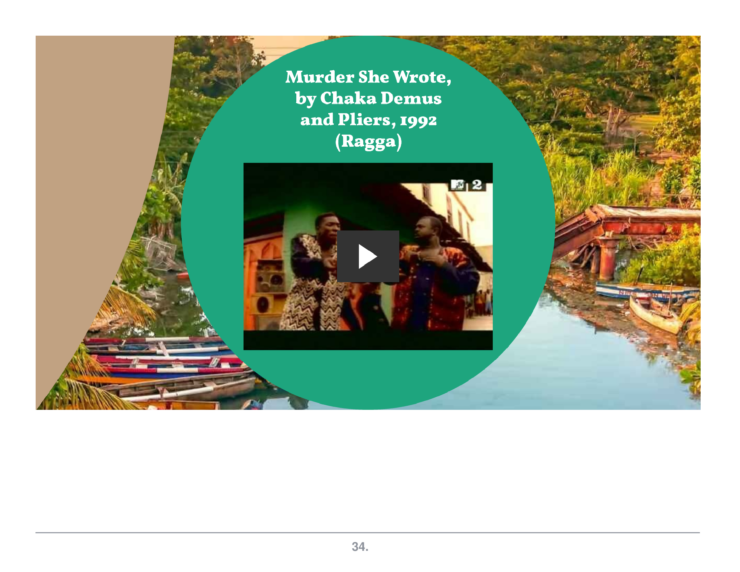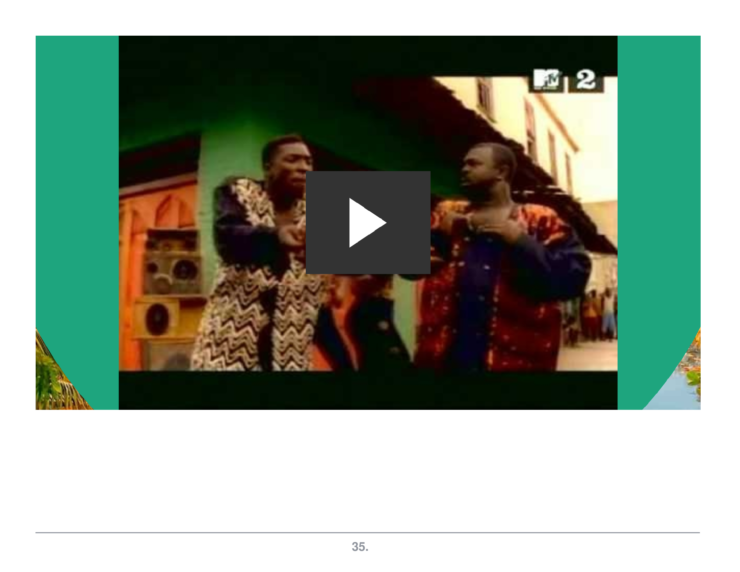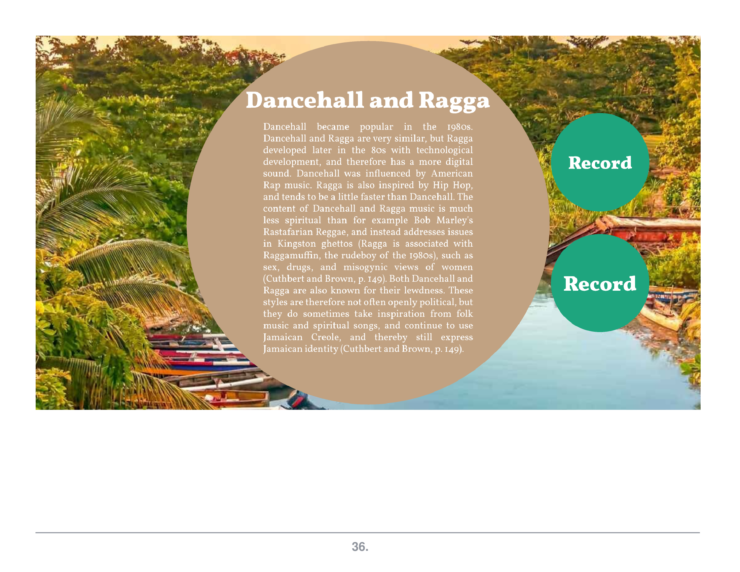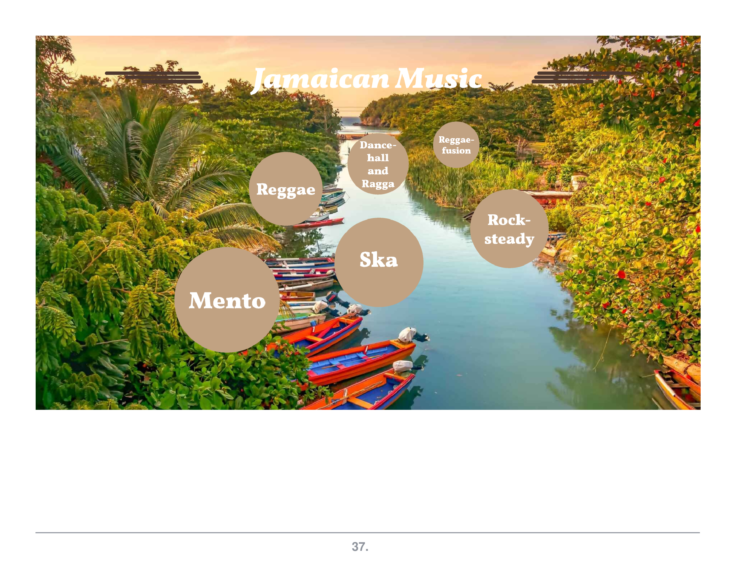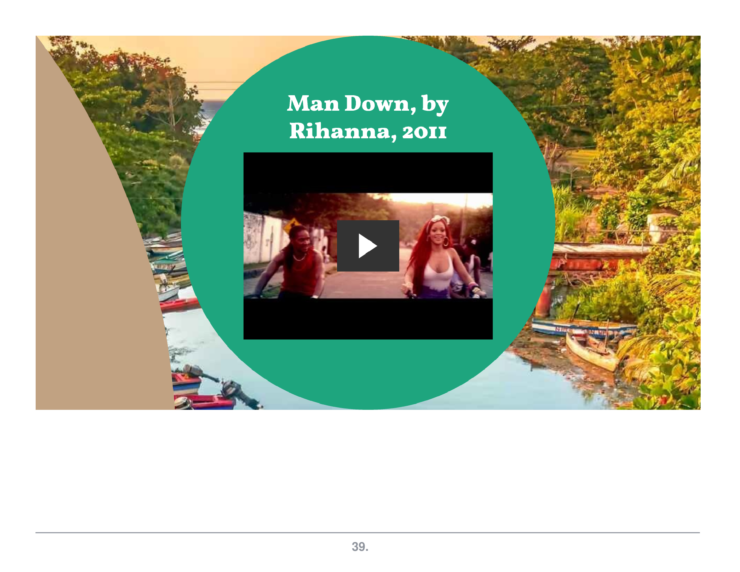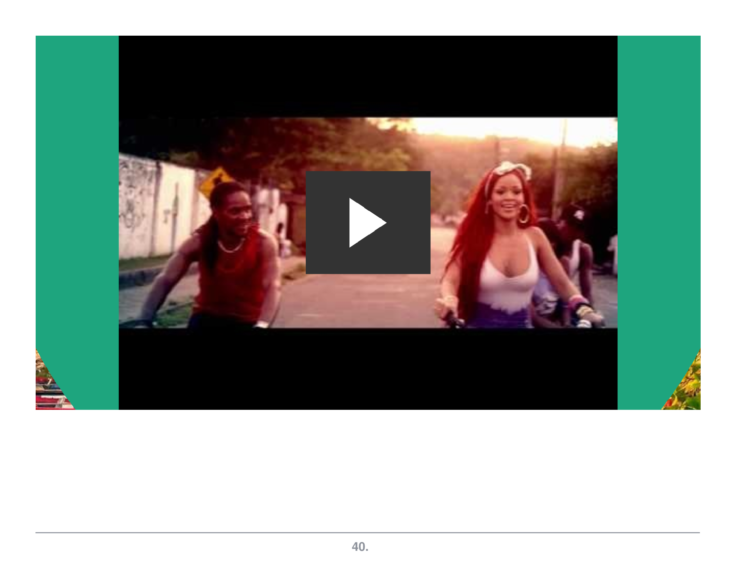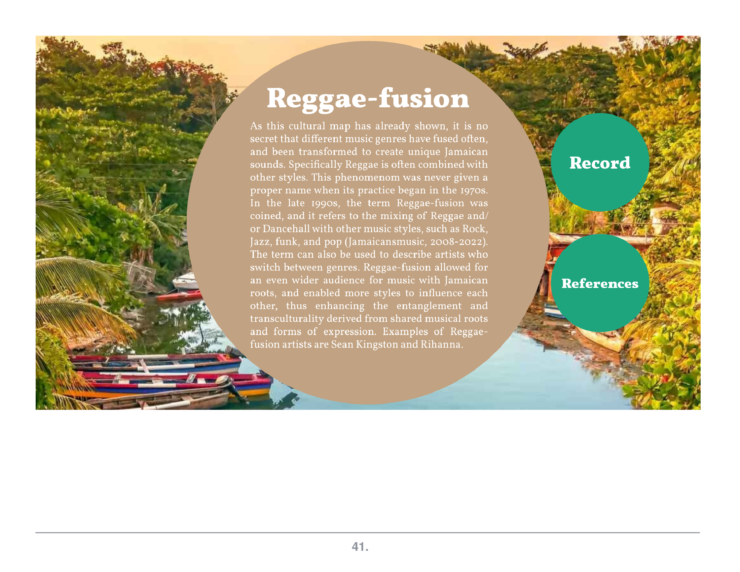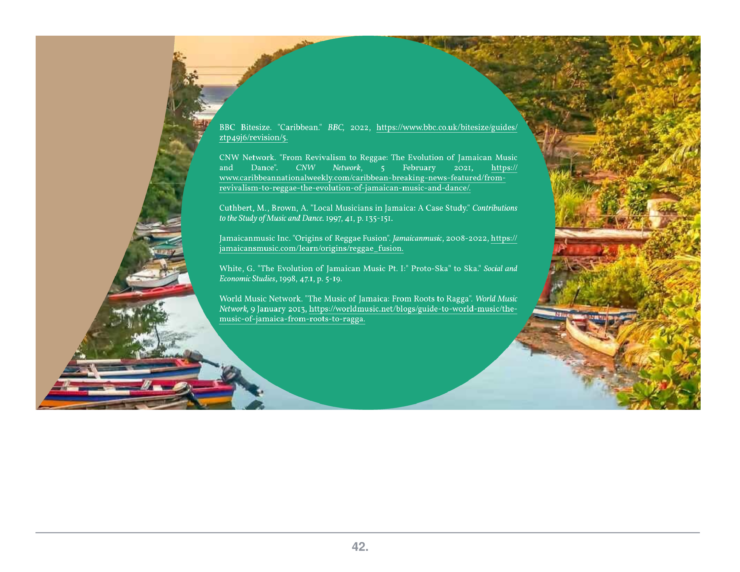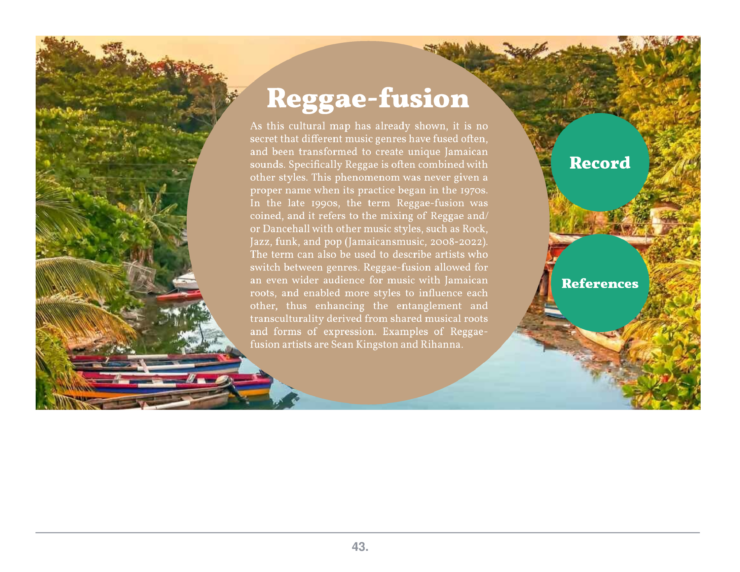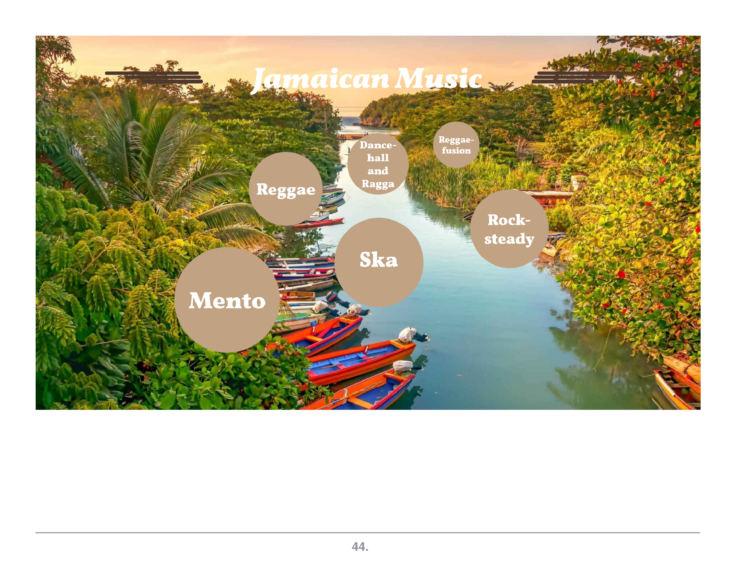Jamaica
Jamaican Music – Nienke Veenstra
The cultural map I have created maps music development in Jamaica, with a focus on the 20th century. While music is something I am personally interested in, I also believe that the kind of music people produce is telling of their opinions, moods, (cultural) affiliations, and any type of tension or lack thereof that defines the environment the music originates from. Additionally, music has a special power to connect people, and to give expression to feelings and sentiments when mere words fall short. Music is something that is, and should be, shared by everyone, and while it can create a fair amount of discussion, pride, and territorialization, it can also serve to spread messages, and to unite and acquaint large amounts of people from vastly different places.
Jamaica is a hub of musical creativity, and Jamaican artists have brought new genres to the world stage of music, of which especially Reggae is a well-known example. My aim with this map is to show how Jamaica’s music serves as both a voice of the oppressed, a form of resistance, a negotiating and celebration of identity, and proof of the cultural entanglement that defines Jamaican identity. This entanglement, which is derived from Jamaica’s tumultuous past, and subsequent cultural hybridity, is expressed in Jamaican music forms. Jamaica does an outstanding job of taking the cultural influences of its past and infusing them with a Jamaican root, which results in the most diverse, interesting, and connective and welcoming music forms of the world. By tracing Jamaica’s music developments, the different cultural influences on Jamaica become evident, especially in relation to its colonial past and present. In relation to that, Jamaican music addresses the political and social issues of the island, and navigates a transcultural identity through for example the use of Jamaican Creole. This map attempts to show this entanglement: the origin and identity of a people that are attempting to turn a very culturally multifaceted past and present into a beautiful, transcultural identity, that inhibits a worldliness that is yet to be matched in other music.
The process of making this map consisted of researching Jamaican (music)history and listening to its songs, and in this process I feel like I have gotten to know Jamaica a little better. I hope that my map will accomplish this for listeners and readers as well: providing an insight into Jamaican culture, and an example of the ways in which music forms can enrich each other, and the cultures they originate from. For what is a nation if not its music, and how would music be without travel and connection?

